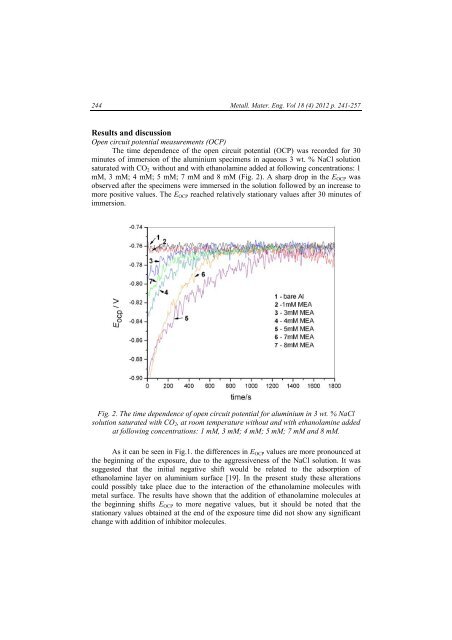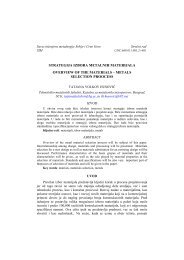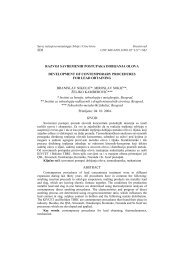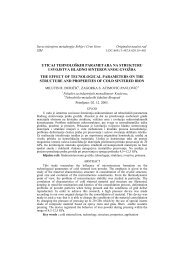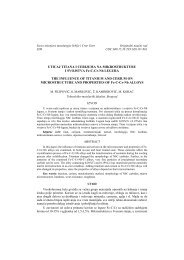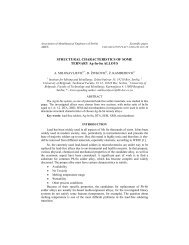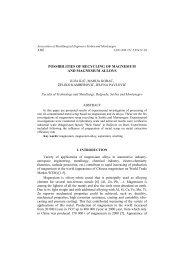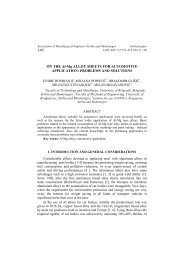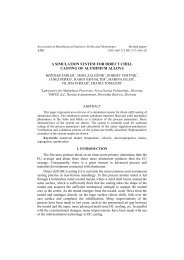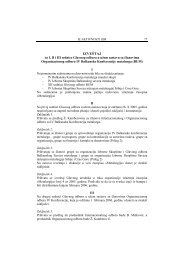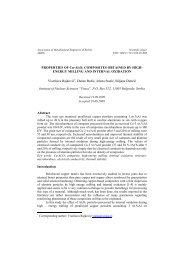THE INHIBITIVE EFFECT OF ETHANOLAMINE ON CORROSION ...
THE INHIBITIVE EFFECT OF ETHANOLAMINE ON CORROSION ...
THE INHIBITIVE EFFECT OF ETHANOLAMINE ON CORROSION ...
You also want an ePaper? Increase the reach of your titles
YUMPU automatically turns print PDFs into web optimized ePapers that Google loves.
244 Metall. Mater. Eng. Vol 18 (4) 2012 p. 241-257<br />
Results and discussion<br />
Open circuit potential measurements (OCP)<br />
The time dependence of the open circuit potential (OCP) was recorded for 30<br />
minutes of immersion of the aluminium specimens in aqueous 3 wt. % NaCl solution<br />
saturated with CO 2 without and with ethanolamine added at following concentrations: 1<br />
mM, 3 mM; 4 mM; 5 mM; 7 mM and 8 mM (Fig. 2). A sharp drop in the E OCP was<br />
observed after the specimens were immersed in the solution followed by an increase to<br />
more positive values. The E OCP reached relatively stationary values after 30 minutes of<br />
immersion.<br />
Fig. 2. The time dependence of open circuit potential for aluminium in 3 wt. % NaCl<br />
solution saturated with CO 2 , at room temperature without and with ethanolamine added<br />
at following concentrations: 1 mM, 3 mM; 4 mM; 5 mM; 7 mM and 8 mM.<br />
As it can be seen in Fig.1. the differences in E OCP values are more pronounced at<br />
the beginning of the exposure, due to the aggressiveness of the NaCl solution. It was<br />
suggested that the initial negative shift would be related to the adsorption of<br />
ethanolamine layer on aluminium surface [19]. In the present study these alterations<br />
could possibly take place due to the interaction of the ethanolamine molecules with<br />
metal surface. The results have shown that the addition of ethanolamine molecules at<br />
the beginning shifts E OCP to more negative values, but it should be noted that the<br />
stationary values obtained at the end of the exposure time did not show any significant<br />
change with addition of inhibitor molecules.


